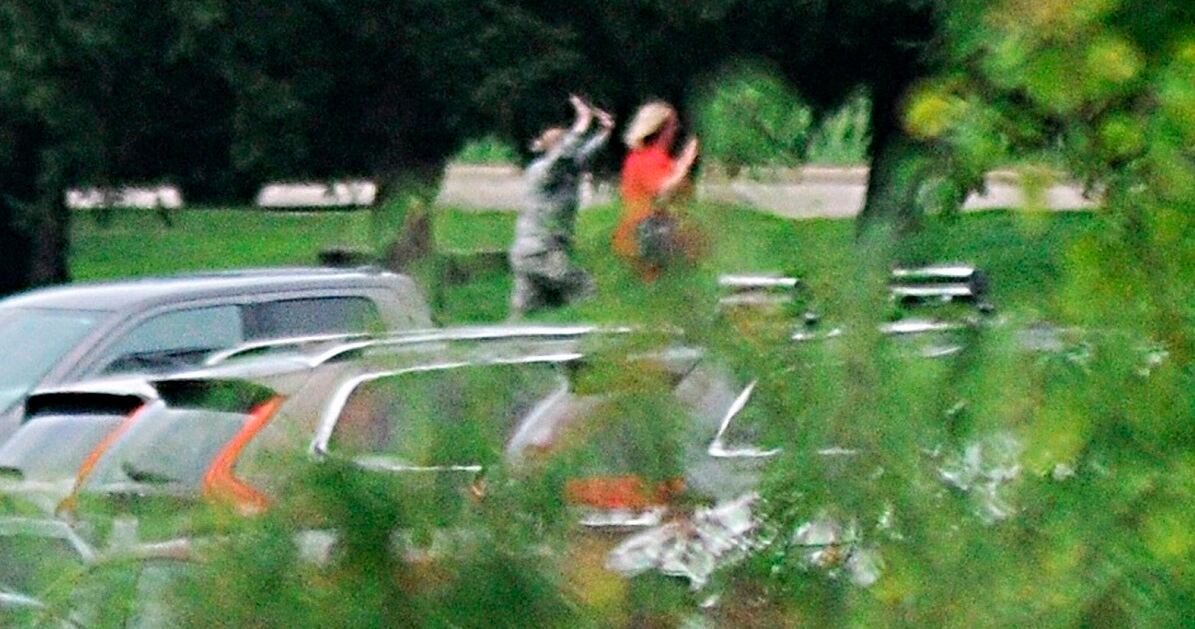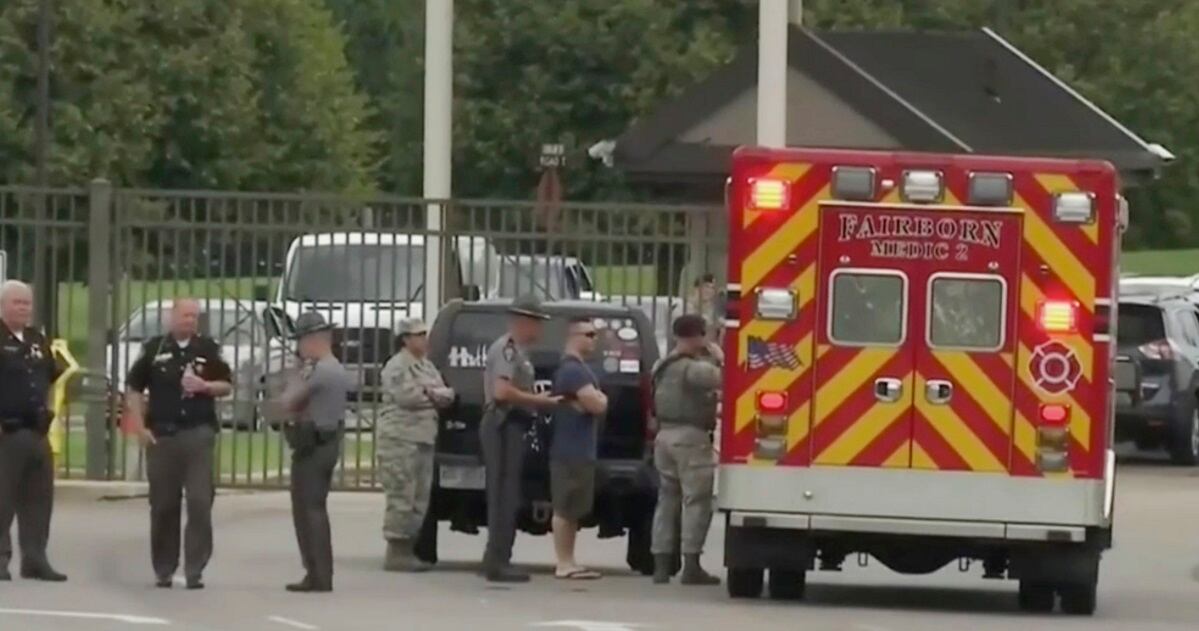Officials at Wright-Patterson Air Force Base on Wednesday detailed a series of miscommunications and confused reactions that led two emergency exercises to snowball into a massive, chaotic active shooter scare in which security forces shot a door open.
And while the Aug. 2 incident on the Ohio base ultimately ended with only minor injuries to one security forces airman, it could have been far worse.
The communications breakdown that occurred that day “led to a completely uncoordinated and ineffective” response that could have ended up causing serious injuries or property damage, officials said.
The problem began when the 88th Air Base Wing Inspector General set up what was intended to be a stand-alone active shooter exercise, around the same time the 88th Medical Group held their own, unrelated mass casualty response exercise at the Wright-Patterson Medical Treatment Facility.
While the wing’s IG and the medical group alerted each other to their exercises, they didn’t record what the other was doing in their own, respective master scenario events list outlining how their exercises would proceed.
Things started to spiral out of control when an employee of the medical group twisted her ankle while running on base and called a co-worker “screaming and crying,” the summary said.
That co-worker called 911, and the injured runner was brought to the emergency room at the base’s medical treatment facility — at the same time the simulated casualties began to report.
“This was the beginning of bleed over from exercise to real world events,” the summary said.
In a news conference Wednesday at Wright-Patterson, installation commander Col. Tom Sherman said that the arrival of the real-world injured jogger, who was in a considerable amount of pain, at the same time as the simulated casualties “caused enough confusion within the [hospital] staff that they began to initiate the lockdown procedures.”
RELATED

A few minutes later, amid the confusion, a medical group employee called the Base Defense Operations Center over a landline to report an actual active shooter event at the hospital. The hospital staff then broadcast a Code Silver over the intercom to lock down the facility and warn staff that an active shooting was in progress, and on-base forces started to respond to what they thought was a real-world scenario.
After hearing the Code Silver, another medical group employee called 911 using a cell phone, which meant the call was routed to the 911 call center off base. This resulted in an “officer in distress” call, or Code 99, to civilian law enforcement.
Federal, state and local first responders from the Dayton area, the state of Ohio, and the FBI and ATF were notified and activated — unbeknownst to the 88th Air Base Wing’s command and control structure, which itself asked for a SWAT team and three mutual aid medical units.

Many of the mutual aid responders didn’t proceed to the entry control point at first, or check in with the incident commander, the summary said. And it wasn’t immediately obvious who the incident commander was, which led to more confusion for the responders who did try to check in.
The confusion meant the incident commander’s command and control capabilities were quickly overwhelmed, and radio incompatibility problems also made it hard to communicate.
The chaos grew even worse when responders from the 88th Security Forces Squadron breached a locked door in the hospital by firing rounds from an M4 carbine through its window. This caused further 911 calls from the hospital reporting the gunshots, exacerbating fears of an active shooter.
One security forces airman received minor injuries when the door was shot open, the report said. Wright-Patterson spokesman Daryl Mayer said that airman received minor lacerations from metal fragments.
The incident commander tried to explain the situation to responders and defuse the situation, but to no avail. The summary said about 50 mutual aid responders bypassed the commander, breached the locked front door of the hospital, and entered with weapons drawn.
As they cleared the building, more confusion spread. After a team entered one room and found it was safe, they announced “clear” to the other responders there.
However, employees who were hiding in the next rooms heard the “clear” announcement and thought they could come out — only to meet responders with weapons drawn, who were still moving through the building.
This showed a gap between the tactics, techniques and procedures used by responders who were clearing the building, and the procedures that had been taught to airmen who worked there, the summary said.
Security forces need a better process to identify themselves to Air Force personnel taking shelter, and the personnel need to be better taught how to identify friendly forces and tell when the all clear is given, the summary said.
The summary also said that having multiple exercises taking place near to each other, while not spelling this out in the events lists, allowed the confusion to occur. All personnel always need to be aware of when an exercise is happening, so they can tell it’s not a real-world scenario, the report said.
The security forces' use of an M4 to breach the door was also inappropriate, the report said, and has been investigated separately by the Office of Special Investigations.
And federal, state and local agencies need to have a thorough understanding about command and control in these situations, including who has jurisdiction and response procedures, the report said.
Stephen Losey is the air warfare reporter for Defense News. He previously covered leadership and personnel issues at Air Force Times, and the Pentagon, special operations and air warfare at Military.com. He has traveled to the Middle East to cover U.S. Air Force operations.




